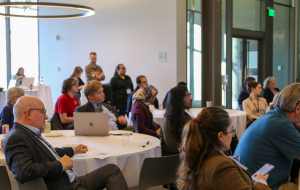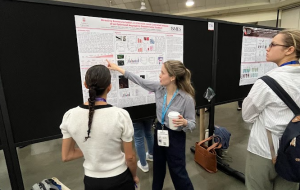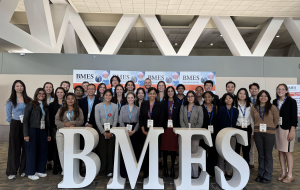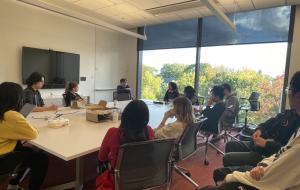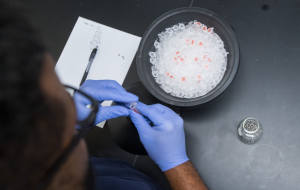The Institute for Biology, Engineering, and Medicine (I-BEAM), a joint institute between the School of Engineering and the Division of Biology and Medicine, is excited to announce our first teams selected for the Collaboratives Program.
Brown’s Institute of Biology, Engineering, and Medicine (I-BEAM) is thrilled to present the Spring 2025 I-BEAM BME Seminar Series.
This semester’s lineup features visionary speakers from leading universities and research organizations nationwide, sharing their cutting-edge work at the intersection of engineering and medicine.
On November 19, the Institute of Biology, Engineering, and Medicine (I-BEAM) Fall Grand Rounds offered a chance for extensive discussion on interdisciplinary collaboration. With a mix of presentations, discussions, and Q&A sessions, the inaugural Grand Rounds brought people from all corners of I-BEAM together.
In November, Brown’s BME Graduate Program hosted its Fall Town Hall, which brought together the community for workshops, discussions, and a social hour.
Scientific conferences can be intimidating — especially ones like the Biomedical Engineering Society’s (BMES) Annual Meeting, which often has over 5,000 attendees.
From October 23 to 26, the Baltimore Convention Center was abrim with biomedical engineering students, researchers, professors, and scientists from across the world attending the Biomedical Engineering Society’s (BMES) Annual Meeting. Amidst the hubbub of plenary speakers, poster presentations, and social mixers, the Brown BME community was able to connect in all sorts of ways.
When Professor Jonghwan Lee first came to the United States from South Korea as a postdoctoral researcher, he didn’t expect to stay here. He just wanted to be involved in cutting-edge research.
Brown University’s biomedical engineers have been making waves for decades. Some of the first BME researchers were Brown faculty members, working in the 1960s and 70s to develop artificial organs.
Ramisa Fariha Sc.M. ’20, Ph.D. ’24, has been named to the 2024 STAT Wunderkind list. Fariha was selected from hundreds of nominations for her innovative research, as STAT News celebrates early-career researchers who are not yet independent scientists or program leaders.
Brown’s Institute for Biology, Engineering, and Medicine (I-BEAM) is excited to welcome our five new Marketing, Communications, and Recruitment Assistants.

